There are many dark chapters in the history of auto racing, but few compare to the devastation and tragedy that took place in 1955. In the same season, horrific crashes overshadowed the Indianapolis 500, the Le Mans endurance race and the world of show business. Over the course of a few months, the world witnessed the ugliest side of racing, pushing many to protest and demand that all forms of racing be outlawed. The public outcry eventually lead to the American Automobile Association (AAA) dissolving the AAA Contest Board, the auto racing arm of the organization, and subsequently leaving the racing world to fend for themselves. This opened the door for the creation of the United States Auto Club (USAC), and immediately caused an unprecedented shift in the hierarchy of power in open wheel racing in the United States. To understand the AAA’s reasons for abandoning their auto racing efforts, and the reasons behind intense public outcry towards auto racing, one must understand the timeline of events that played out throughout the summer of 1955 that cast the darkest light imaginable on the racing industry. Dr. Martin Luther King Jr. once said, “We are not makers of history. We are made by history.” While this quote is profound and insightful, it also applies to many aspects of life. At its core, the structure and hierarchy of American auto racing is built on its history; by the decisions of those with power, and by tragic events that ignite change. 1955 was a year that ignited an inferno of change.
May 30, 1955
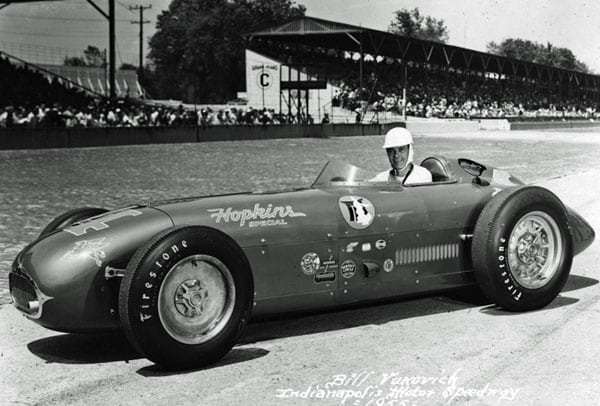
The most anticipated day in American auto racing: the running of the Indianapolis 500. In this, the 39thrunning of the 500, “The Fresno Flash,” Bill Vukovich entered the day as the clear favorite to become the first driver to win three 500s in a row after dominating the event in 1953 and 1954. In fact, were it not for a steering failure in 1952 on the 192nd lap, he likely would have been vying for his 4th win in a row at the world’s most famous speedway. Vuky was widely respected by fans and competitors alike, as his ‘no nonsense’ attitude and quiet demeanor was both intimidating and charming, and demanded respect from all that he encountered. In many regards, Vuky was the Dale Earnhardt of the 1950’s, and dominated the sport as such. Starting from the fifth position, Vuky lead 50 of the first 56 laps of the event before tragedy struck. Although there are numerous accounts of the accident, the sequence of events highlighted in Bob Gates’ book ‘Vukovich’, are, in my opinion, the most accurate and thorough analysis of the events of the accident. Several lines in this segment are pulled directly, or interpreted from, his works.
The ill effects of wind are a common problem at Indianapolis, as it routinely tampers with the handling of the cars as they exit the speedway’s sweeping turns. Memorial Day, 1955 was no exception, as gusting 30 mph winds created a tricky situation for drivers exiting the second corner throughout the race. The first victim of the tampering winds was Roger Ward, as he lost control of his racer and spun while exiting the second corner on the 57thlap. In the course of the crash, Ward’s car backed into the guardrail near the footbridge at the exit of the corner, causing the machine to tumble twice and grind to a halt right side up, facing traffic several hundred feet away. As Ward’s car was tumbling, the cars of Al Boyd, Al Keller and Bill Vukovich exited the second corner and headed for Ward’s crashing racer. All three drivers took evasive action to the left, and all would have been fine if Keller, a rookie at the speedway that year, had not ducked too far to the left and ran into the infield grass. The lack of traction caused Keller’s machine to slide back across the straightaway to the right, directly into the path of Boyd and Vukovich. Boyd took evasive action to the right to no avail, as Keller’s racer struck Boyd’s left rear and sent him over the front end of Keller’s machine and upside down, from which point he slid to a stop, still upside down, several hundred feet later. At the same moment in which Boyd’s racer was careening over Keller’s, Vukovich launched over Boyd’s right rear and catapulted into the air just a few feet before the footbridge that crossed the back stretch. The car clipped the guardrail as it sailed over it, resulting in the car nosediving into the ground with incredible force. The impact snapped Vuky’s head forward, and then back again in a whip-cracking motion, causing a basilar skull fracture and killing him instantly. The car would continue to flip for nearly 400 feet smashing the hood of a parked Studebaker, clipping a pickup truck and crushing a Safety Patrol Jeep parked along a service road adjacent to the track in the process, before coming to rest upside down in a ball of fire with Vuky still strapped into the seat. The fire was so intense that safety crews were unable to douse it, and so they simply controlled the flames until they burnt themselves out.
The race resumed after a lengthy delay, with Bob Sweikert coming home the winner. Vuky’s death sent shock waves through the sport, and had many fans and competitors alike questioning the very fundamentals of auto racing. The record books show that it was not just Vukovich’s death that weighed heavy on the minds of 1950’s racers and fans, however, as the statistical evidence of the dangers of racing in the 1950’s are staggering. Of the thirty-three men who started the 1955 Indianapolis 500, eighteen of them would eventually die violent deaths behind the wheel of a racecar– three of them before the end of the year. As racing advocates around the world attempted to save the image of auto racing, while also pay tribute to the loss of their greatest champion, the rest of the world was preparing for the world’s largest endurance race: Le Mans. Little did they know that an even greater tragedy awaited them in the hills of northwestern France…
June 11, 1955
As the world shifted its focus to the running of Le Mans, many hoped to put the horrific memories of the Indianapolis 500 behind them. As with the events of the 1955 500, the internet is filled with analysis of the tragic events of the tragedy at Le Mans. To many, its simply known as “The Le Mans Disaster”, with no further explanation required. That said, Kurt Ernst’s account of the accident written for Hemmings Daily is the most accurate and thorough account of the crash that I have found. Rather than interpret, and potentially dilute his writings, I have included his version of the accident as follows:
“The 23rd running of the 24 Hours of Le Mans began like many other races on the Circuit de la Sarthe before it, in clear weather and with the traditional driver’s sprint across the track. Though the spectators that packed the grandstands along the start-finish line on June 11, 1955, were cheering for their favorite marque or driver, the battle for victory was expected to be between Jaguar’s D-Type and Mercedes-Benz’s new 300 SLR. Thirty-five laps later, a tragedy of unimaginable proportions would claim the life of Mercedes driver Pierre Levegh, along with as many as 84 spectators, though an official death toll has never been released. Another 120 would be injured, and the incident would leave a permanent scar on the sport of motor racing.
The chain reaction leading up to the accident is well documented, both in print and on film, sometimes with graphic content. Mike Hawthorn, driving a Jaguar D-Type and leading the race, had just passed the significantly slower Austin-Healey 100S driven by Lance Macklin when Hawthorn noticed a pit board calling him in for fuel. The Jaguar pilot braked hard to turn in, and the D-Type’s disc brakes scrubbed off speed with brutal efficiency. The same could not be said of the drum brakes on Macklin’s Austin-Healey, and facing a collision with the race-leading Jaguar, Macklin swerved to his left to avoid the Jaguar.
Under different circumstances, the evasive maneuver would have caused little drama for anyone other than Macklin, but another scenario was unfolding behind the Austin-Healey. Pierre Levegh, in one of the Mercedes-Benz 300 SLRs, was preparing to make room for Juan Manuel Fangio, the Mercedes team leader, who was dueling with Hawthorn for the lead of the race. Perhaps momentarily distracted, Levegh had little time to react as his speeding car closed on Macklin’s. As periodicals of the day noted, Levegh raised his hand, signaling Fangio to slow down.
The ensuing collision launched Levegh’s 300 SLR over the Austin-Healey, and the airborne Mercedes impacted an earthen berm adjacent to the spectator grandstands. Disintegrating upon impact, the car shed parts into the stands before exploding, its flaming gasoline further dousing the crowd and igniting the car’s magnesium-alloy Elektron bodywork. Macklin’s destroyed 100S spun into the wall before sliding across the track, killing a spectator but somehow leaving the driver without serious injury.
Many in the grandstands tried to run from the horror before them as others rushed in to render aid. It’s unclear how many died instantly, but Levegh was among them, suffering a fatal head injury after being thrown clear of his car. Given the severity of the impact, it’s doubtful that safety belts, considered unnecessary and potentially dangerous in 1955, would have made any difference on the outcome.
Though unthinkable in the wake of such a tragedy today, race organizers did not black flag the race, on the grounds that departing spectators would clog the roads and prevent inbound emergency vehicles from reaching the track. Few drivers or crews understood the severity of the accident, or the growing death toll, even hours after the accident. American driver John Fitch, who was to share the 300 SLR driven by Levegh, overheard a journalist reporting that 65 spectators had been killed (though the final toll would climb much higher); only then did the true gravity of the situation become apparent.”
Ernst also went on to perfectly summarize the events after the crash, “For the racing world, the fallout was immediate and far-reaching. Grand Prix races were cancelled in France, Germany, Switzerland and Spain, and all racing activities were halted in France until spectator safety could be reviewed and improved.” Switzerland took things a step farther, banning all racing activity from 1955 until June, 2018 when the country hosted an all-electric Formula E championship event – its first domestic racing event in nearly 63 years! The 1955 running of the Le Mans left an enduring scar on auto racing around the world, and served as another brutal reminder of the dangers of racing.
September 30, 1955
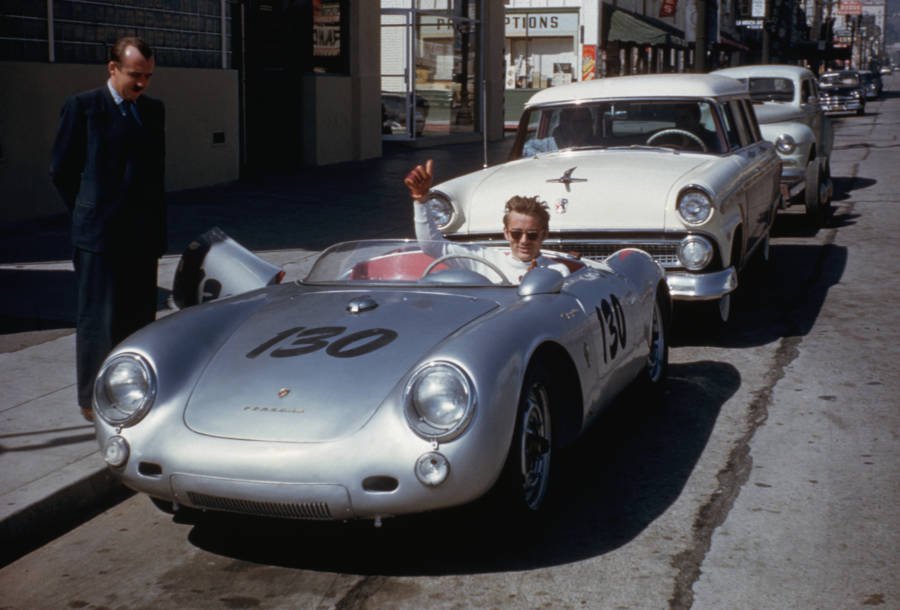
James Dean. Even today, the iconic actor is known worldwide for his larger than life persona and unconventional acting techniques that shot him to the top of the world of show business in the 1950’s. What is often overlooked about Dean is his passion for auto racing, which extended to his youthful days of racing motorcycles. He was even quoted in high school as saying, “My hobby, or what I do in my spare time, is motorcycle. I know a lot about them mechanically, and I love to ride. I have been in a few races and have done well.” While his path to stardom was cemented with the release of East of Eden in April of 1955, a film in which his, “largely-improvised performance and quintessential representation of the restless American youth in the ’50s was widely praised”, according to ATI’s Gina Dimuro, Dean continued to pursue his racing dreams on the side. He participated in both the Palms Springs Road Races and the Santa Barbara Road Races that summer, and purchased a brand new Porsche Spyder in early September, which he nicknamed “Little Bastard” and planned to drive in the Salinas Road Race in California. Dean originally planned to have Little Bastard transported to the event, but decided to drive the car there himself at the last minute instead.
According to accounts of the crash, “On September 30, 1955, the Hollywood star set off for Salinas in Little Bastard, accompanied by his mechanic, Rolf Wütherich. Dean was stopped for a speeding ticket around 3:30 P.M., ate at a diner around 4:45 P.M., then hit the road again. At around 5:45 P.M., Dean noticed a Ford heading towards his car that was preparing to make a left turn at the junction ahead. After Dean supposedly reassured Wütherich, “that guy’s gotta stop, he’ll see us.” He didn’t. Instead, the two cars collided head-on.
Wütherich was catapulted from the car and suffered several broken bones, while Dean was pronounced dead upon arrival at Paso Robles War Memorial Hospital, shortly after 6 PM.
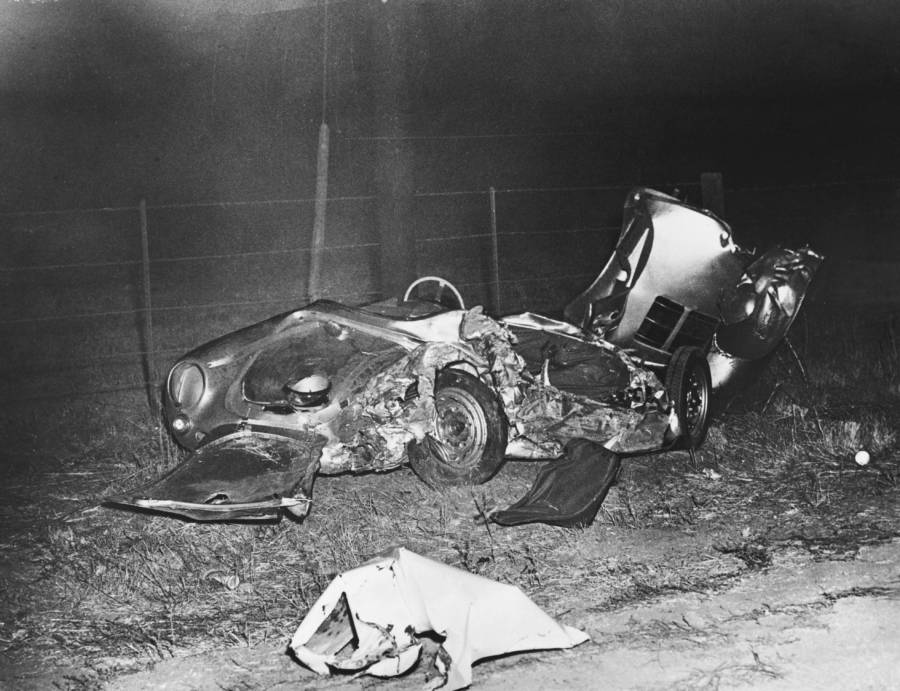
Much like the racing world, the world of show business had lost it’s biggest star at the hands of a racing related incident.
AAA Reacts
In the end, the events of 1955 were too much for the AAA to bear. As an organization founded on helping drivers and promoting safe travels, they felt it was counterproductive to their organization’s mission to continue to sanction and support auto racing of any kind. From a business perspective, it’s hard to argue against their logic. Auto racing had proven vicious, tragic and highly unsafe, with a high level of uncertainty on how to counteract these issues. As the sanctioning body for such auto racing events, a lack of answers for solutions for these issues was not an ideal look for the AAA Contest Board, and so they distanced themselves from the blemish on their image.
The importance of the AAA Contest Board in motorsports at the time cannot be underestimated, however. In many ways, the Contest Board was NASCAR before there was a NASCAR. The board controlled many series and disciplines of racing, as well as the nation’s premier event: the Indianapolis 500. The livelihood and overall structure of American auto racing ran through the AAA Contest Board from the time of its creation in 1904, until its elimination in 1955, and so the disbanding of the contest board sent shockwaves through the racing community. Suddenly American auto racing had no clear leader, and therefore no clear direction or future.
USAC
A short time after the AAA Contest Board was dissolved, Tony Holman, the owner of the Indianapolis Motor Speedway, created the United States Auto Club to replace the Contest Board as the authoritative figure for the implementation of rules, car design, and other matters for championship car racing. History shows that although USAC’s authority has transformed and shifted tremendously in the years since its creation, it still stands as an irreplaceable pillar in American auto racing today.
It’s hard to imagine what direction open wheel racing may have taken if the events of 1955 had proven less tragic, if the AAA Contest Board had never been dissolved, or if USAC had never been created.
One thing is certain, however. As future generations reflect on 1955, it will always be remembered as a year of tragedy, change & James Dean.
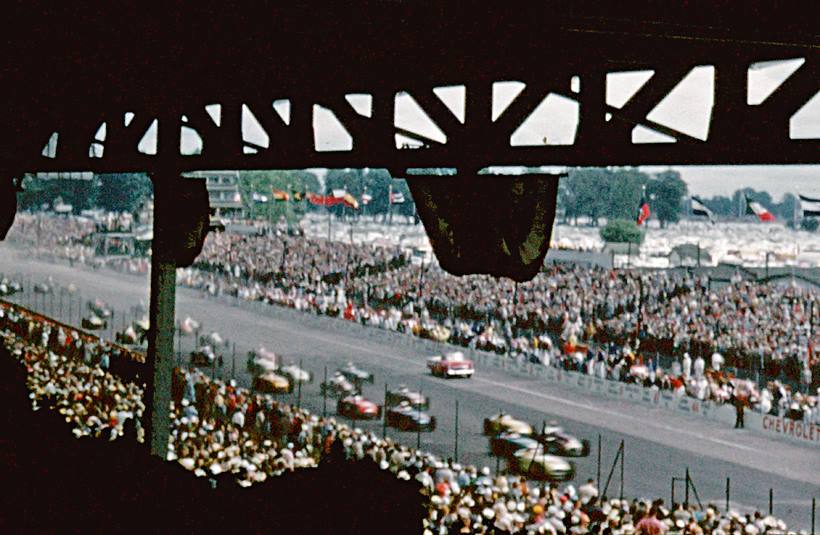
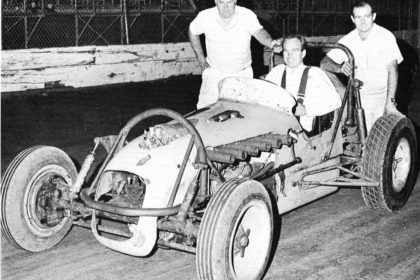

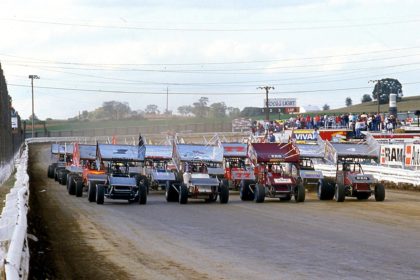
2 Comments
Mark Knowles
March 4, 2019 at 1:26 pmAppreciate these articles for sure. It’s good to read about the history and learn more about the background of auto racing. I already have a fair size library of racing books, magazines, and various other printed material but the stories here are a nice addition to my “mental library”.
Ronald Sieber
March 12, 2019 at 1:54 amNice article! Strange year, 1955…